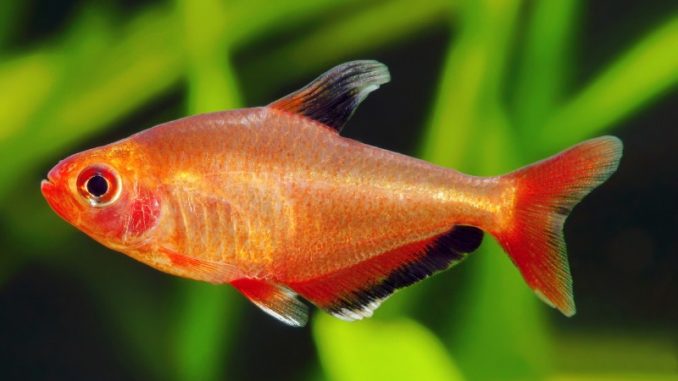
The red phantom tetra is a small freshwater fish that’s part of the tetra fish family.
Red phantom tetras are colorful fish with red-tipped fins that dilute to an orangey hue. Their bodies are a translucent bronze color, and they have a black spot on either side of their gill plates. These fish have stocky and compact bodies and reach a fully grown size of 1.5 inches.
Sometimes called red tetras, they are bright and cheerful fish. However, they’re timid and don’t cope well with aggressive or predatory tank mates.
TABLE OF CONTENTS
Red Phantom Tetra Facts & Overview
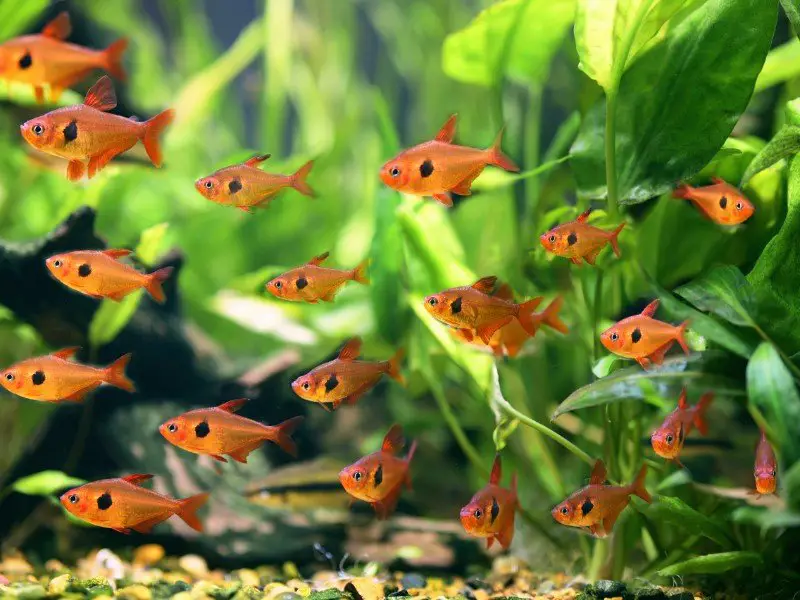
| Category | Rating |
| Care Level | Moderate |
| Temperament | Docile, but an opportunistic omnivore |
| Color | Bronze body with red-tipped fins |
| Lifespan | ~5 years |
| Size | ~1.5 inches |
| Diet | Omnivore |
| Family | Characidae |
| Scientific Name | Hyphessobrycon sweglesi |
| Minimum Tank Size | >14 gallons |
| Tank Setup | Freshwater, plants, caves |
| Compatibility | Peaceful, shoaling species |
Distribution
The red phantom tetra (Hyphessobrycon sweglesi) is originally from South America. This fish is found in the Amazon River’s tributaries and ponds and in the Orinoco tributary of the Amazon River. The Amazon River is highly vegetated and thriving with wildlife.
Red phantom tetras can be bred in captivity. You will notice males bumping into females to show that they are ready to mate.
Adult Size & Lifespan
Adult red phantom tetras can grow up to 1.5 inches long. Female red phantom tetras are wider than males, and males are also bright and colorful, whereas females have a dull coloration. In the wild, tetras will reach their expected average size, but tetras may be smaller in captivity due to living in confined aquariums.
Healthy red phantom tetras can live up to five years. However, these fish require optimal tank conditions to live a long life.
Availability
Tetras of any kind are common, and you can find commercially bred and wild red phantom tetras available for purchase for a reasonable price.
Red phantom tetras are usually sold in small groups of five or six. They are schooling fish, and do best when they live together. The average price for one fish is around $3, or $15 for a group of five fish.
Appearance & Behavior
Red phantom tetras have semi-translucent bodies with a bronze hue. Their name stems from their red fins and the deep crimson tips on their dorsal fins. Red phantom tetras have a black spot on their ventral side, behind their gill plates and their eyes are a dark black/brown color.
Females have a dull coloration, whereas males look bright and vibrant. Male red phantom tetras also have longer dorsal fins than females, and they have more streamlined bodies than females.
Stressed red phantom tetras can lose their color and stressed juveniles often stop growing. If the water pH isn’t correct, red phantoms can turn black or a dull gray color.
Red phantom tetras also strongly resemble serpae tetras.
Other subspecies of tetra fish come in varying shapes and sizes. Some are rhomboid in shape and range in colors from bronze to black, and others are neon. Black phantom tetras and red phantom tetras are good schooling companions, and both are hardy species of tetras.
With each species of tetras, it is important to observe the tank water pH that is required. While these subspecies are related, they don’t always favor exactly the same pH or blackwater conditions.
Typical Behavior
Red phantom tetras swim around the middle and top levels of the tank and hide behind plants and rocks, and in caves when they feel threatened.
Male red phantom tetras often puff themselves up, forcing their ventral fins out so they look imposing. They do this to attract females during breeding. This species can be territorial. They will nip the fins of fish that get in their way to assert their dominance.
Aquatic fish need to sleep, so using a light timer can be helpful to establish a day to night routine. The tank light should be on for 12–14 hours a day to allow red phantom tetras to sleep at night, or when their tank is dark.
Red Phantom Tetra Care
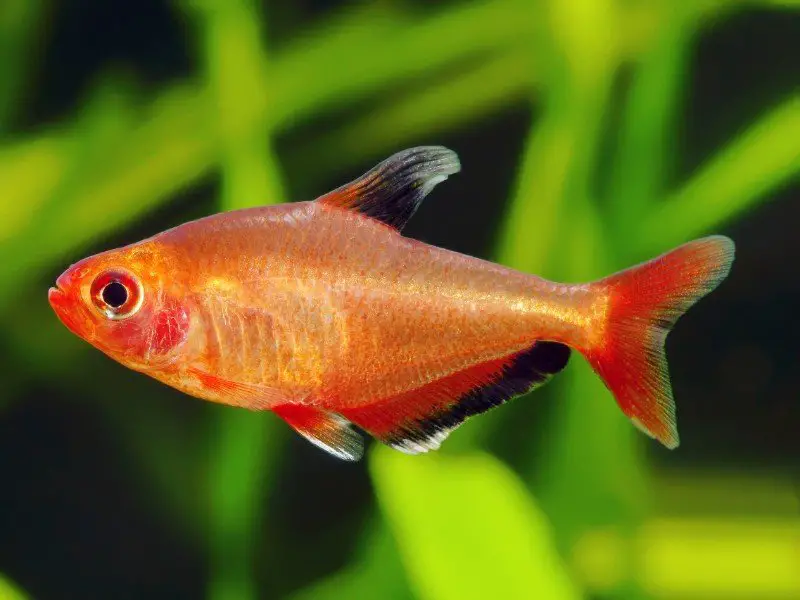
Caring for red phantom tetras is easy and they are an appropriate choice for beginners to breed. Correct tank conditions, tank environment, diet, and care routine contributes to their health.
Red phantom tetra tanks need aquatic plants for the fish to hide and socialize in, which is why newly established tanks are not appropriate for this species. Sub-tropical aquariums have specific temperature ranges that can be hard to stabilize, so you should wait until the aquarium is fully set up before adding red phantom tetras to the tank.
Red phantom tetras are easy to feed. These fish enjoy fine-grained meals like TetraMin Tropical flakes. You can also feed captive red phantom tetras Tetra Rubin granules to boost their immunity. These granules stay in the upper and mid-levels of the tank, which is where red phantom tetras like to eat and swim.
Disease
Red phantom tetras are susceptible to common aquarium diseases. It’s advisable to establish your tank before you introduce red phantom tetras to the aquarium.
New tank mates and components can introduce bacterial or fungal infections. Because of this, you should quarantine new fish or plants before adding them to a community tank.
Common diseases that red phantom tetras can contract include:
- Bacterial infections — such as red pest, columnaris, and tail and fin rot. These conditions need to be treated with antibiotics. Remove the affected fish, place them in a quarantine tank and administer medication.
- Fungal diseases — like Ichthyosporidium require antibiotics and antifungal medications can be obtained from an aquatic vet.
- Parasitic diseases — commonly called “Ich”. Add antibiotics and copper-based treatments to the tank water to alleviate the parasitic load and give the fish a chance at recovery. You should replace carbon in the water filter after copper-based treatments.
Habitat and Tank Requirements
The conditions you keep your red phantom tetras in should mimic their natural environment. The Amazon River is a blackwater environment with a slightly acidic pH. It is plant-rich, and the decaying plant matter contributes to the unique environment that the tetras thrive in.
The watercourse of the Amazon River is home to fields of aquatic grasses or floating meadows, water lilies such as the Victoria amazonica, giant floating lily, and lianas.
So closely copy the water conditions of the waters of the upper Amazon River in your aquarium. The habitat of appropriate tetra-friendly fish tanks includes plants and other animals that are appropriate to keep as companions to your red tetra collection.
Tank Conditions
Red phantom tetras prefer a large tank that is at least 24 inches long. These fish also thrive in water with a pH of 5.5–7.5, and the tank water should stay between 72–78℉.
Water
Keep the water hardness level between 4–8 dGH. Check the pH levels of the water regularly if you install a carbon water filter, and aquatic peat is a good natural filtration method.
Plants and Decorations
Include floating leaves and surface vegetation to provide the fish with shade. Decomposing plants release tannins that are beneficial for the fish. Other tank decorations like wood, caves and decorative elements can also help make red phantom tetras feel at home.
Substrate
Add aqua soil to the aquarium if you want to plant aquatic plants as it is full of nutrients that the plants need. You can also add a thin layer of gravel for aesthetic purposes too.
Aquarium
Make sure the aquarium has a secure lid. Red phantom tetras like to leap out of the water, especially during mating season.
Tank Mates
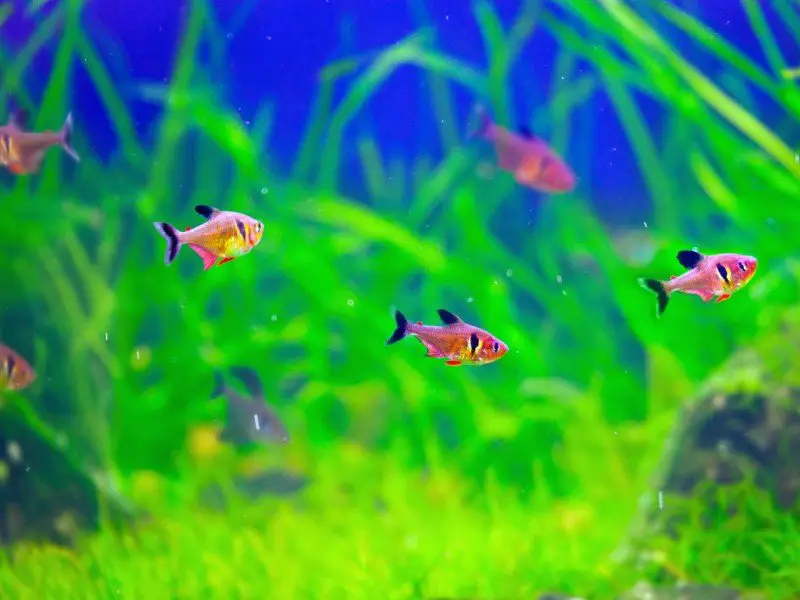
Red phantom tetras are docile and timid, so they can become prey for large predatory fish.
You should keep them with mild-tempered tetras such as:
Red phantom tetras will eat non-fish tank mates like aquatic snails and shrimp.
Diet and Feeding
Red phantom tetras are omnivores in the wild, and they will eat decomposing plant material as well as small creatures like baby shrimp, larvae, and snails. These fish thrive on fine-grained subtropical fish flakes in captivity. You can also feed adult tetras granules.
Feed red phantom tetras once daily during daylight. You should only feed the fish enough food for one session as rotting food can cause diseases.
Breeding
Male fish will show readiness to breed by bumping into females. Females will then release eggs for males to fertilize and deposit their eggs on and around plants.
Breed the fish in a breeding tank for the best results. Once spawning is complete, remove the red phantom tetras from the tank.
Hatchlings will eat their yolk sac, but mature fry will need to be fed. You should move mature fry into a community tank and feed them infusoria. Egg yolk and brine shrimp can also be added to the water to help fry grow big and strong.
Should You Get a Red Phantom Tetra for Your Aquarium?
Red phantom tetras are hardy, but they require very specific habitat and tank conditions. Selecting appropriate tank mates is also a challenge. Red phantom tetras need docile tank mates that share the same tank conditions as one another.
With that said, red phantom tetras add visual beauty to any aquarium. Seeing their school around the tank with their bright red fins on display is enjoyable.
These fish are a great tank addition, so yes, you should add a school of these bright fish as soon as your tank has reached the required level of plant maturity.

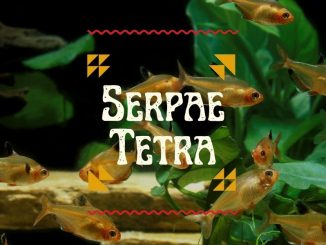
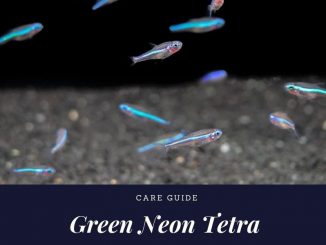
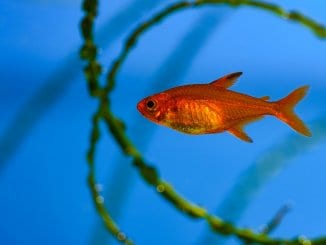

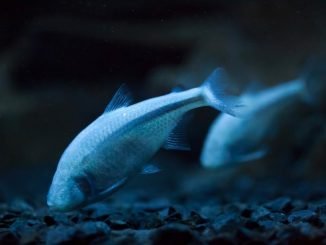
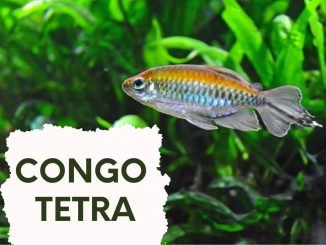
Be the first to comment